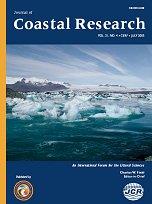The data from 161 quantitative sandy beach transect surveys from a wide variety of locations were examined to identify trends and relationships between total marine macrofauna species richness, abundance, and biomass and physical variables. Several physical variables were correlated, especially sand particle size and beach face slope, and spring tide range and beach face slope. Higher latitudes experienced larger waves, and flatter beaches had finer sands, larger waves, and larger tides. Strong correlations were found between species richness and beach slope, tide range, and sand particle size, as well as various indices of beach state. Tropical regions harbored significantly more species than other regions. A new Beach index (BI), based on tide range, beach face slope, and sand particle size, correlated well with species richness, explaining 56% of the variability in the data without considering latitude. Abundance and biomass were best correlated with log(1/beach face slope) and tended to be higher in temperate regions. General patterns are discussed; the new index is evaluated; and the roles of sand, tide, slope, and latitude are considered. It is concluded that for regional studies log(1/beach face slope) is the most useful index to compare beaches, whereas for wider comparisons covering areas of differing tide range, BI might be most useful. These patterns have implications for global biodiversity management on sandy beaches.
How to translate text using browser tools
1 July 2005
Global Patterns in Sandy Beach Macrobenthic Communities
Anton McLachlan,
Atsu Dorvlo

Journal of Coastal Research
Vol. 2005 • No. 214
July 2005
Vol. 2005 • No. 214
July 2005
beach slope
biomass
species richness
tides




